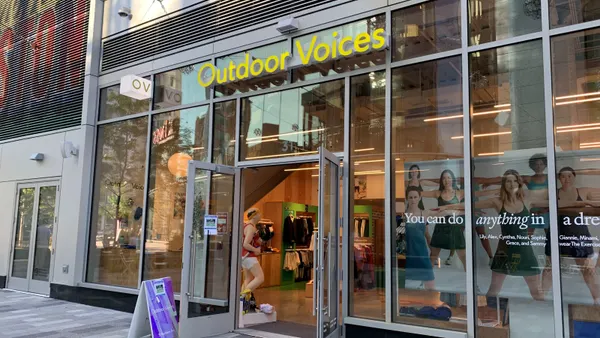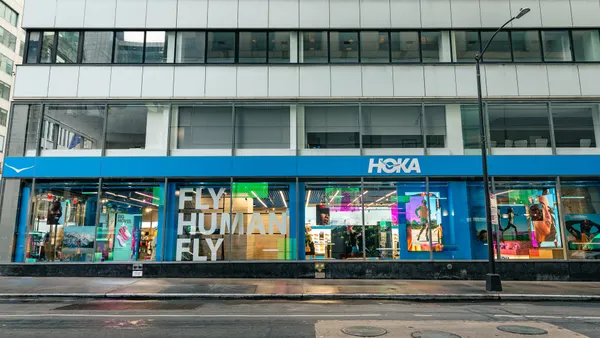Dive Brief:
-
Non-grocery retailers last year missed out on $300 billion in revenues — in the aggregate 12% of total sales — due to markdowns, according to research from retail think tank Coresight and inventory optimization firm Celect.
-
In the survey of more than 200 "senior retail decision makers," those responding pinned the blame for more than half (53%) of unplanned markdowns on "inventory misjudgments."
-
Multichannel retailers were less likely to sell off their inventory at full price, according to the report, "Revealing the Hidden Costs of Poor Inventory Management."
Dive Insight:
The data offers further evidence of a problem that Instinet analysts have been warning about since last summer.
"We continue to believe that inventory levels across the US landscape have been worse than they appeared, with the full-price channel finally catching up to the elevated levels seen at off-price over the past year," Instinet analyst Simeon Siegel wrote in comments emailed to Retail Dive last month. In that note, Siegel pointed to Nordstrom's particular hit to profits during the holidays: "Higher-than-anticipated markdowns to better align inventory levels are likely to add [gross margin] rate pressure in 4Q."
It's not just Nordstrom, however, and e-commerce appears to be exacerbating the problem. The historical return rate for goods from in-store purchases is about 8%, while the rate for online purchases ranges from 15% to 30%, depending on the merchandise category, according to a report from commercial real estate services firm CBRE emailed to Retail Dive late last year. Applying that range to eMarketer's projection of $123 billion of online sales in the November-December holiday period, CBRE expects the season's maximum value of online returns to reach $37 billion, up from 2017's $32 billion in online returns.
Coresight's report also highlights how e-commerce has complicated inventory management, and that's supported by other research as well. E-commerce return rates are three to four times higher than for brick-and-mortar stores, according to return solutions firm Happy Returns. That's especially true in apparel, where e-commerce growth is outrunning overall retail sales growth online and off. The online apparel market has grown by a compound annual growth rate of 14% since 2012, soaring above the 1% growth offline, according to Forrester Research. The share of fashion spending over the web (20%) outpaced online spending in retail overall (13%), according to that report last year.
It's become clear that many consumers expect retailers to put up with the practice of ordering more than they'll keep in order to try things on in person. To combat that, especially in apparel, many retailers are taking steps to help customers find their appropriate fit and virtually try on clothes. Others, like Stitch Fix, Nordstrom Trunk Club and Amazon Prime Wardrobe, use data to steer customers to choose items they're most likely to buy, but they also bake returns into the process.
The problem can also be mitigated by well-informed inventory management, however, through better collection and use of data, according to Coresight CEO-founder Deborah Weinswig. "Ever-expanding choice and rapid changes in consumer behavior are increasing the pressure on retailers to make smart merchandising decisions, and these pressures show no signs of easing," she said in a statement.














